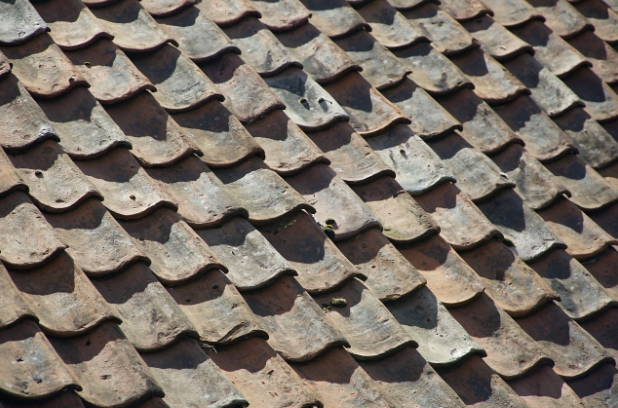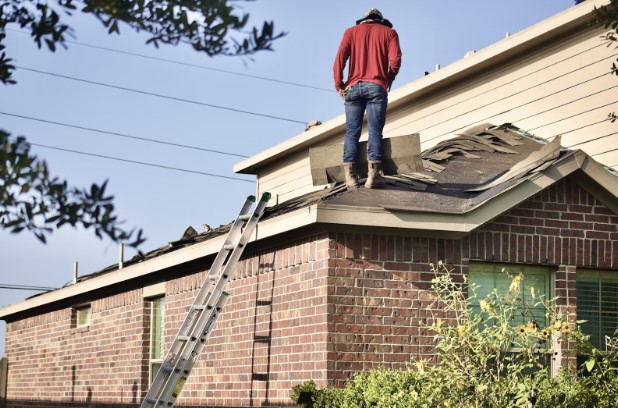Your home is more than just a place – it’s an investment in your family’s safety and well-being. Among the many elements that make up your home, the roof stands as a silent guardian, protecting you from the whims of weather and the elements. However, over time, this stalwart defender can face wear and tear, putting your home at risk.

Check for Missing or Damaged Shingles
Walk around your property and inspect the roof’s surface, paying close attention to any noticeable gaps or areas where shingles are curled, cracked, or completely absent. When inspecting the roof, Florida roofing businesses specifically emphasize the importance of checking for signs of hurricane or tropical storm damage due to the region’s susceptibility to severe weather conditions. Addressing these issues promptly can prevent water infiltration and more extensive damage.
Inspect for Water Stains on Ceilings
An indoor indicator of potential roof damage is water stains on your ceilings. If you notice discoloration or watermarks, it may signal a leak in your roof. Track the source of the stain back to its origin on the roof to pinpoint the problem area. Timely identification of these stains can help you address the underlying issue before it worsens.
Address Leaks Promptly
Water stains indicate an existing or potential leak in your roof. Promptly addressing these leaks is vital to prevent further damage to your home’s interior. Seal any identified gaps or replace damaged shingles to halt the progression of water infiltration.
Consider Professional Inspection
If water stains persist or you’re uncertain about the extent of the damage, consider hiring a professional roofing inspector. Their expertise can provide a comprehensive assessment of your roof’s condition, helping you make informed decisions about necessary repairs.
Monitor Interior Conditions
Regularly monitor your home’s interior for signs of water stains, even in areas not directly beneath the roof. This proactive approach allows you to catch potential leaks early, mitigating the risk of extensive damage and preserving the integrity of your home.
Examine Roof Flashing
Roof flashing, the material installed around chimneys, vents, and other protrusions, is susceptible to wear and tear. Check for any signs of rust, cracks, or loose flashing, as these vulnerabilities can lead to water penetration. Replacing or repairing damaged flashing ensures that your roof remains a sturdy barrier against the elements.
Look for Sagging Areas
A sagging roof is a clear indication of structural issues. From the ground, assess your roof’s contour for any noticeable dips or sags. If identified early, you can prevent further structural damage by addressing the root cause promptly. Sagging can result from various issues, such as a weakened foundation or damaged support structures.
Consider Roof Age
The age of your roof plays a crucial role in its susceptibility to damage. Over time, materials degrade, and exposure to the elements takes its toll. If your roof is nearing the end of its expected lifespan, it’s wise to conduct more frequent inspections.
Evaluate for Mold and Mildew
Sagging areas can create pockets where moisture accumulates, providing an ideal environment for mold and mildew growth. Inspect your roof for any signs of discoloration or fungal development. Addressing these issues promptly not only preserves your roof but also protects your indoor air quality and the overall health of your home.
Consult with a Professional
If you’re uncertain about the severity of sagging or structural issues, seek the expertise of a roofing professional. Their trained eye can identify hidden problems and provide insights into the best course of action. Investing in a professional assessment ensures that potential risks are mitigated effectively, maintaining the integrity of your home’s structure.
Examine Gutters and Downspouts
Proper water drainage is essential for the health of your roof. Clogged gutters and downspouts can lead to water pooling on the roof, causing deterioration over time. Regularly inspect and clean gutters, ensuring they are free of debris. Additionally, check that downspouts direct water away from the foundation to prevent water-related issues.
Assess Attic Ventilation
A well-ventilated attic is crucial for maintaining a healthy roof. Inadequate ventilation can lead to heat and moisture buildup, accelerating roof decay. Inspect your attic for proper airflow, and ensure vents are unobstructed. Adequate ventilation not only extends the life of your roof but also enhances energy efficiency in your home.

Being proactive in identifying roof damage is key to protecting your home and your investment. Regular inspections and prompt repairs can save you from significant expenses and ensure the longevity of your roof. By following these guidelines and addressing any issues promptly, you can safeguard your home like a seasoned professional, fortifying it against the elements for years to come.






